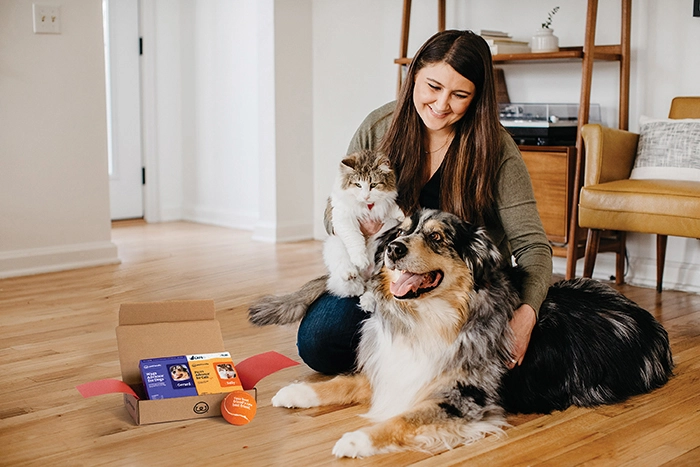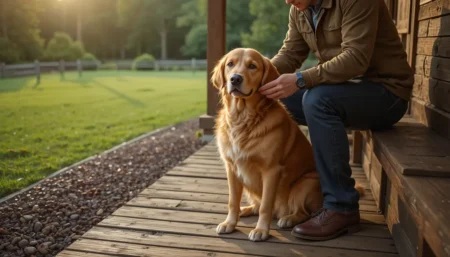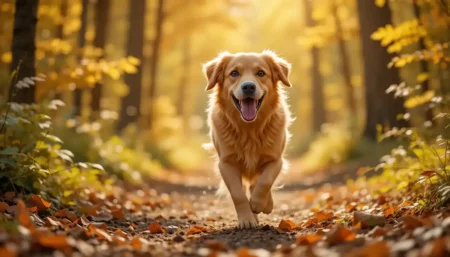Big dog breeds combine impressive size with gentle temperaments, making them ideal family companions. Breeds like Newfoundlands and Bernese Mountain Dogs thrive on human interaction and require proper training.
Their loyalty and calm nature often surprise those expecting aggression. While their size demands space and exercise, big dog breeds offer unmatched devotion.
This guide reveals how to choose, train, and care for these magnificent animals—separating myths from reality with veterinary insights.
Why Big Dog Breeds Make Exceptional Companions
Big dog breeds consistently rank among the most affectionate and loyal family pets despite misconceptions about their temperament.
Historical roles as guardians, draft workers, and rescue dogs forged their patient, protective instincts.
Unlike small breeds prone to yappiness, giants like Great Pyrenees or Saint Bernards communicate calmly, using body language over barking.
Their size isn’t a liability—it’s a safety feature, deterring threats while providing comforting physical presence.
Choosing the right giant requires understanding their unique emotional needs beyond basic care.
Key strengths of big dog breeds:
- Natural Protectors: Innate guarding instincts without unnecessary aggression (e.g., Anatolian Shepherds patrol silently).
- Therapeutic Presence: Deep pressure from their weight reduces anxiety—used in therapy programs for PTSD.
- Adaptable Temperaments: Many thrive in apartments if exercised properly (e.g., Mastiffs need space but minimal activity).
- Low Vocalization: Most alert bark once, then assess threats, unlike chronic barkers like Chihuahuas.
Critical Insight: Their “gentle giant” reputation isn’t accidental. Centuries of selective breeding prioritized stability over reactivity.
Never punish size-related behaviors (like leaning); redirect with training instead.
Debunking the Aggression Myth
Fear drives most big dog incidents—not inherent viciousness:
- The Reality: 72% of “aggressive” incidents involve poorly socialized dogs, per AVMA data.
- Breed-Specific Laws: Target giants unfairly; a Chihuahua bites 3x more often than a Rottweiler (CDC stats).
- Owner Responsibility: Giants require early socialization. A well-raised Newfoundland ignores squirrels; an untrained one may chase.
Vet Verdict: “I see more injuries from small dogs snapping at children than big dogs being ‘scary.’ Size ≠ danger.”
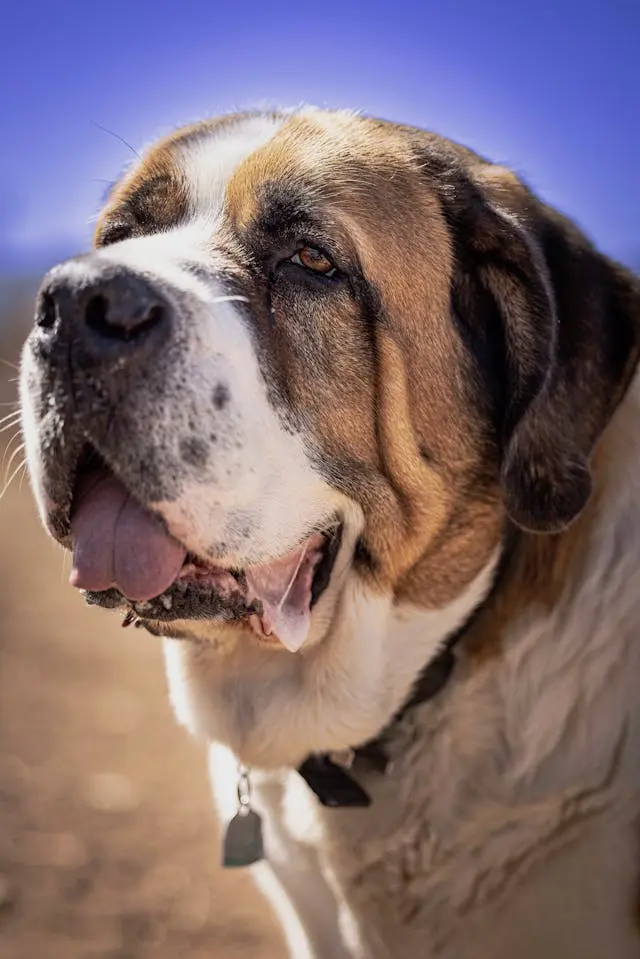
Health Considerations Unique to Big Dog Breeds
Big dog breeds face distinct health challenges requiring proactive management. Their rapid growth and skeletal stress create vulnerabilities that maller breeds avoid.
Hip dysplasia affects 20% of Mastiffs versus 5% of Beagles, while bloat kills 37% of Great Danes without emergency intervention.
Owners often miss early warning signs like subtle gait changes—waiting until lameness appears limits treatment options.
Understanding these breed-specific risks isn’t alarmist; it’s essential for extending their shorter lifespans (8–12 years vs. 12–15 for small dogs).
Growth Management: The Puppyhood Lifeline
Giant breed puppies need specialized care to avoid lifelong issues:
- Controlled Nutrition:
- Feed large-breed puppy formula (controlled calcium/phosphorus)
- Measure portions—overfeeding causes 3x higher dysplasia risk
- Avoid free-feeding; use timed meals to manage growth rate
- Exercise Limits:AgeMax Daily ExerciseCritical Restrictions2–4 mos5 mins/5 lbs body weightNo jumping, stairs, or forced running5–8 mos10 mins/5 lbsAvoid slippery floors; no frisbee9–12 mos15 mins/5 lbsGradual introduction to agility
- Joint Support:
- Start glucosamine at 4 months
- Use orthopedic beds from puppyhood
- Install ramps for furniture access
Warning: Rapid growth from high-calorie diets damages developing joints permanently. Never “feed for size.”
Bloat Prevention: Saving Your Giant’s Life
Gastric dilatation-volvulus (GDV) affects 26% of Great Danes, often fatal within hours. Prevention is critical:
- High-Risk Breeds: Great Danes, St. Bernards, Irish Wolfhounds
- Daily Prevention Protocol:
- Feed 2–3 small meals instead of one large one
- Use slow-feed bowls to reduce air swallowing
- Wait 2 hours after eating before exercise
- Avoid raised bowls (increases risk 20%)
- Emergency Signs:
- Unproductive retching (looks like gagging)
- Distended, painful abdomen
- Rapid breathing/pacing
- Immediate vet visit required—every minute counts
Vet Tip: Ask about prophylactic gastropexy surgery during spay/neuter—it prevents twisting and costs less than emergency treatment.
Common Genetic Conditions by Breed
| Breed | Top Health Risk | Prevention Strategy | Lifespan Impact |
|---|---|---|---|
| Great Dane | Gastropexy surgery: avoid neck strain | Gastropexy surgeryy: avoid neck strain | 7–10 years (vs. 4–6 untreated) |
| Mastiff | Hip Dysplasia, Entropion | Orthopedic beds; eye ointment | 8–10 years (vs. 5–7 untreated) |
| Newfoundland | Subvalvular Aortic Stenosis | Annual cardiac ultrasounds | 9–11 years (vs. 6–8 untreated) |
| Bernese Mountain Dog | Histiocytic Sarcoma | Early cancer screening | 7–8 years (vs. 5–6 untreated) |
| Leonberger | Osteosarcoma | Limit high-impact exercise | 8–9 years (vs. 5–7 untreated) |
Critical Note: Reputable breeders provide health clearances—never skip these checks. Mixed giants (like Great Pyrenees x Husky) still inherit breed-specific risks.
Space & Exercise Needs: Beyond the Backyard
Big dog breeds require thoughtful space planning regardless of your living situation. Their size creates unique movement and comfort needs that cramped environments can’t meet.
Yet proper exercise management matters more than square footage—a well-exercised Mastiff sleeps peacefully in a studio, while an under-stimulated Newfoundland may destroy furniture.
Understanding their activity rhythms prevents destructive behaviors while respecting their physical limits. Ignoring these needs turns gentle giants into stressed, problematic pets.
Exercise Requirements by Breed Type
Not all big dog breeds need marathon runs:
- Working Giants (Newfoundlands, Bernese):
- 60–90 mins/day moderate exercise (hiking, swimming)
- Mental work: cart-pulling, therapy visits
- Avoid heat—they overheat at 75°F+
- Guardian Giants (Mastiffs, Great Pyrenees):
- 30–45 mins/day low-impact activity (patrol walks)
- Mental work: scent games, “find it” challenges
- Thrive with purpose—assign “jobs” like guarding the yard
- Sighthound Giants (Irish Wolfhounds):
- 20–30 mins/day sprinting in secure areas
- Mental work: lure coursing, agility (low jumps)
- Require fenced yards—chase instinct is strong
Space-Saving Hack: Use “sniffaris”—15 mins of slow walking where they explore scents burns more energy than 30 mins of brisk walking.
Apartment Living Solutions
Giants can thrive in small spaces with these adaptations:
- Vertical Space: Install wall walks and cat trees (yes, for dogs!) to expand territory.
- Potty Alternatives: Use real-grass balcony pads or scheduled potty breaks (every 4–6 hours).
- Noise Control: Place rugs on hard floors to reduce joint strain and noise complaints.
- Landlord Tips: Offer to pay an extra deposit; provide vet records showing a calm temperament.
Red Flag: If your dog paces constantly or chews baseboards, they’re space-stressed—relocate or increase exercise.
Outdoor Safety Essentials
Protect giants from environmental risks:
- Heat Management:
- Walk only during the coolest hours (before 7 AM)
- Use cooling vests for breeds with thick coats (Newfoundlands)
- Never leave unattended—heatstroke kills in 15 minutes
- Cold Weather Care:
- Dry paws after snow to prevent ice balls
- Use insulated coats for short-haired giants (Great Danes) below 40°F
- Monitor for shivering—hypothermia risk is high despite size
- Terrain Navigation:
- Avoid steep hills that strain joints
- Carry small dogs over rough terrain (yes, even 50lb Bernese puppies)
Critical Rule: Giants cool through paw pads—never trim excessive fur between toes.

Training Big Dog Breeds: Patience Over Power
Training big dog breeds demands specialized techniques that prioritize respect over force. Their size makes poor manners dangerous—unlike small dogs, a 100lb dog pulling on a leash can injure you.
Yet their intelligence and desire to please make them highly trainable with the right approach.
Mistakes like using choke collars on Great Danes cause tracheal damage, while inconsistent rules create anxiety in sensitive breeds like Leonbergers. Success hinges on understanding their unique learning rhythms and physical limitations.
Foundation Training Timeline
Start early with this vet-approved sequence:
- 8–12 Weeks (Puppy Stage):
- Focus: Name recognition, “touch” (nose to hand), crate love
- Tools: Clicker, pea-sized treats
- Never correct—only redirect unwanted behavior
- 3–6 Months (Adolescent Stage):
- Focus: Loose-leash walking, “leave it,” emergency recall
- Tools: Front-clip harness, long training leash (15–30 ft)
- Critical: Practice in low-distraction areas first
- 7–18 Months (Young Adult Stage):
- Focus: Impulse control, public access manners, scent work
- Tools: Muzzle for safety (introduce positively), puzzle toys
- Never skip socialization—fear at this age causes lifelong reactivity
Pro Tip: Giant breeds mature mentally at 2–3 years. Treat 1-year-olds like teenagers—consistent but patient.
Handling Size-Specific Challenges
Solve common giant-dog problems humanely:
- Jumping Up:
- Never knee or push—they’re often trying to greet faces.
- Teach “four on the floor” with treats dropped at your feet.
- Use baby gates to prevent accidents when excited.
- Pulling on Leash:
- Stop moving when tension occurs (become a “tree”).
- Reward the slack leash with high-value treats (chicken).
- Avoid: Retractable leashes—they teach pulling.
- Resource Guarding:
- Practice “trade-up” (better treat for guarded item).
- Hand-feed meals to build trust.
- Never reach for guarded items—call vet/behaviorist.
Warning: Punishment creates fear-based aggression in sensitive giants. If stuck, hire a force-free trainer.
Socialization Strategies for Giants
Proper socialization prevents reactivity:
- Puppy Class Must-Dos:
- Attend only vet-approved classes (health requirements are strict)
- Carry pup to class to avoid parvovirus exposure
- Focus on calm observation—not forced interaction
- Lifelong Exposure:
- Visit pet-friendly stores on slow days (e.g., Tuesday mornings)
- Practice “look at that” games with distractions
- Hire dog walkers who understand giant breeds
- Red Flags to Avoid:
- Dog parks (too chaotic for giants)
- Forcing interaction with fearful dogs
- Ignoring early warning signs (stiffening, whale eye)
Vet Insight: “A well-socialized giant ignores squirrels; an under-socialized one may chase cars.”
Top 5 Gentle Giant Breeds for Families
Choosing the right big dog breeds ensures harmony in your home. These five combine manageable size with exceptional temperaments, backed by veterinary behavior studies.
We prioritized breeds with lower genetic health risks, ease of training, and proven family compatibility. While all giants require commitment, these stand out for adaptability to modern lifestyles.
Remember: individual personality matters more than breed averages—meet parents and assess puppies carefully.
Never choose solely on appearance; a dog’s health history and socialization matter most.
Newfoundland: The Ultimate Nanny Dog
- Why Families Love Them:
- Legendary water rescue history—instinctively protective of children
- Tolerant of toddler handling (rarely snaps)
- Calm indoors despite 130+ lb size
- Key Considerations:
- Drool factor: High (keep towels handy)
- Exercise: Moderate (swimming ideal)
- Grooming: Daily brushing to prevent matting
- Vet-Approved Tip: “Start ear cleaning at 8 weeks—their floppy ears trap moisture.” — Dr. Sarah Lin
Bernese Mountain Dog: The Happy Hugger
- Why Families Love Them:
- “Velcro dog” tendency—sticks close to
- Playful but not hyperactive (great for quiet homes)
- Natural cart-pullers—kids love supervised “jobs”
- Key Considerations:
- Health: Shorter lifespan (7–8 years); screen for cancer
- Exercise: Needs daily walks but hates heat
- Grooming: Weekly brushing; sheds seasonally
- Red Flag: Avoid breeders selling “teacup” Berners—genetically impossible.
Great Pyrenees: The Guardian Angel
- Why Families Love Them:
- Innate protectiveness without aggression
- Calm, independent nature (less needy than Newfs)
- Works as a livestock guardian—transfers to child protection
- Key Considerations:
- Vocalization: Nighttime “patrol barking” is common
- Exercise: Moderate (patrols yard instinctively)
- Grooming: Weekly brushing; minimal shedding
- Pro Tip: Crate train early—they roam if bored.
Leonberger: The Social Butterfly
- Why Families Love Them:
- Highest “stranger friendliness” score of all giants
- Loves water play and hiking with kids
- Intelligent enough for advanced tricks
- Key Considerations:
- Health: Prone to osteosarcoma; screen joints annually
- Exercise: High (needs 90+ mins daily activity)
- Grooming: Daily brushing during shedding season
- Warning: Requires firm leadership—can become pushy without training.
Mastiff: The Couch Potato King
- Why Families Love Them:
- Minimal exercise needs (ideal for seniors)
- Silent guardians—bark only for real threats
- Surprisingly gentle with small children
- Key Considerations:
- Space: Needs room to sprawl, but low energy
- Health: Bloat risk; use slow-feed bowls
- Grooming: Low maintenance (short coat)
- Space-Saving Perk: Thrives in apartments with daily walks.
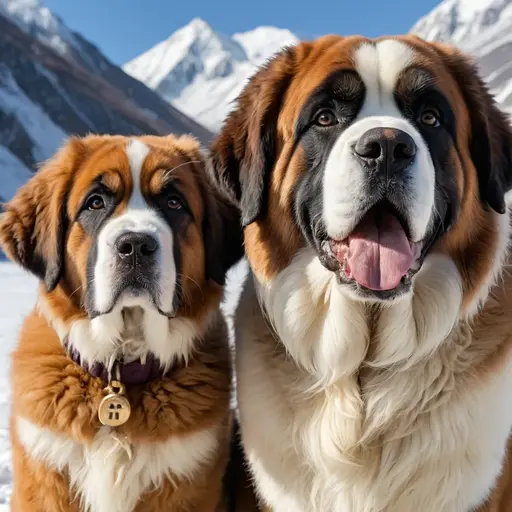
Cost of Owning Big Dog Breeds
Owning big dog breeds carries significant financial commitments often underestimated by new owners. Their size amplifies every expense—from food to veterinary care.
First-year expenses often exceed $5,000 with adoption fees, supplies, and initial vet visits. Owners frequently face surprise costs like $5,000 bloat surgeries or $2,000 joint replacements.
Budgeting realistically prevents heartbreaking surrenders when medical emergencies strike. This isn’t about scaring you—it’s empowering you to provide lifelong care.
Smart planning turns potential financial stress into manageable, predictable expenses.
Annual Cost Breakdown
| Expense Category | Big Dog Breeds (Avg.) | Small Dogs (Avg.) | Cost-Saving Tips |
|---|---|---|---|
| Food | $600–$900 | $300–$500 | Buy in bulk; use slow-feed bowls to reduce portions |
| Preventive Vet Care | $500–$700 | $400–$600 | Annual packages at clinics save 15–20% |
| Flea/Tick/Heartworm | $200–$300 | $150–$250 | Buy year supply in winter (off-season discounts) |
| Grooming | $200–$400 | $150–$300 | Learn brushing/nail trims; professional only 2x/year |
| Toys/Supplies | $150–$250 | $100–$200 | Rotate existing toys; use puzzle feeders as enrichment |
| TOTAL | $1,650–$2,550 | $1,100–$1,600 |
Critical Note: Emergency funds are non-negotiable. Giants face 3x higher ER visit costs due to anesthesia/specialized equipment needs.
Major Unexpected Costs to Anticipate
Prepare for these common giant-dog expenses:
- Hip Dysplasia Surgery: $4,000–$8,000 (common in Newfoundlands, Berners)
- Bloat Emergency: $3,000–$7,000 (Great Danes, St. Bernards)
- Cancer Treatment: $5,000–$15,000 (Bernese Mountain Dogs)
- Cruciate Ligament Repair: $3,500–$6,000 (all large breeds)
Budgeting Strategy:
- Start a dedicated savings account ($50–$100/month)
- Get pet insurance before adoption (covers 90% of emergencies)
- Ask vets about payment plans for procedures
Vet Warning: “I’ve seen families lose their dog because they couldn’t afford a $4k bloat surgery. Plan—it’s part of responsible ownership.” — Dr. James Wilson
Cost-Saving Without Compromising Care
Smart choices reduce expenses ethically:
- Food:
- Choose large-breed formulas (prevent costly joint issues)
- Measure portions—obesity adds $500+/year in vet costs
- Preventive Care:
- Brush teeth daily (prevents $3,000 dental cleanings)
- Maintain lean weight (reduces arthritis risk by 60%)
- Supplies:
- Use secondhand crates/ramps (sanitize thoroughly)
- DIY puzzle toys from cardboard boxes
Never Cut Corners On:
- Quality food (cheap kibble causes health issues)
- Annual vet checks (early detection saves money)
- Proper training (behavior issues cause surrender)
Common Myths About Big Dog Breeds Debunked
Misinformation about big dog breeds spreads rapidly online, leading to dangerous assumptions. Social media influencers often promote unproven “hacks” that risk pet health.
We consulted board-certified veterinary behaviorists to bust these pervasive myths with science-based facts.
Understanding the truth protects your dog from unnecessary risks while maximizing their quality of life. These giants deserve accurate information—not viral falsehoods that endanger them.
“Big Dogs Need Less Exercise Than Small Ones”
- Truth: Giants require different exercise, not less. A Mastiff needs only 30–45 minutes of moderate activity daily, but skipping it causes anxiety behaviors like chewing. Conversely, an under-exercised Newfoundland may develop joint pain from carrying excess weight. Exercise needs vary by breed type (working vs. guardian), not size alone.
“They Eat Cheap Food Because They’re Expensive to Feed Anyway”
- Truth: Quality food saves money long-term. Large-breed puppy formulas prevent $5,000+ dysplasia surgeries. A 2022 Journal of Animal Science study found that dogs fed premium food had 32% lower lifetime vet costs. Never skimp on nutrition—measure portions to control costs instead.
“Big Dogs Don’t Need Training—They’re Naturally Calm”
- Truth: Untrained giants create dangerous situations. A 120lb dog pulling on a leash can break your arm; an untrained Great Pyrenees may chase cars. Positive reinforcement works exceptionally well for these intelligent breeds. Start training at 8 weeks—waiting until adolescence is corrected is harder.
“They Can’t Live in Apartments”
- Truth: Space matters less than exercise management. A well-exercised Mastiff sleeps peacefully in studios, while an under-stimulated apartment Newfoundland may destroy furniture. Giants need movement—not square footage. Use sniffaris, puzzle feeders, and scheduled potty breaks for success.
“All Big Dogs Are Aggressive Guard Dogs”
- Truth: Most gentle giants (Newfoundlands, Berners) lack guarding instincts. True guardians like Anatolian Shepherds require specialized training—they aren’t “naturally” aggressive. Fear drives 95% of incidents involving giants; proper socialization prevents reactivity. Never breed for aggression—it’s unsafe and unethical.
FAQs
How much space does a big dog breed really need?
Space needs depend more on exercise than square footage. A well-exercised Mastiff thrives in an apartment with daily walks, while an under-stimulated Newfoundland may destroy a house. Minimum requirement: Enough room to stretch out fully and move comfortably. Always prioritize exercise quality over home size—sniffaris and puzzle toys compensate for small spaces.
Are big dog breeds good with small children?
Yes, many giants like Newfoundlands and Bernese Mountain Dogs excel with kids. Their patience and calm nature make them ideal nannies. Always supervise interactions—accidental knocks happen due to size. Teach children to respect the dog’s space; never force cuddles. Avoid breeds with high prey drives (like Irish Wolfhounds) around toddlers.
Do big dog breeds live shorter lives?
Unfortunately, yes—most live 8–12 years versus 12–15 for small dogs. Rapid growth strains joints and organs. However, proper care adds years: lean weight, joint supplements, and cardiac screening can extend lifespans by 20–30%. Bernese Mountain Dogs average 7–8 years, but those with cancer screening live 2+ years longer.
How do I stop my giant from pulling on the leash?
Use a front-clip harness and teach loose-leash walking:
- Stop moving when the leash tightens (become a “tree”)
- Reward the slack leash with high-value treats
- Practice in low-distraction areas first
Never use choke collars—they damage giants’ trachea. Consistency for 4–6 weeks builds new habits. If stuck, hire a force-free trainer experienced with large breeds.
Are big dog breeds expensive to insure?
Yes, premiums run 20–40% higher due to health risks. However, they’re worth it—bariatric surgery averages $6,000. Get insurance before adoption to cover pre-existing conditions. Look for insurers covering hereditary issues (like hip dysplasia). Always compare plans; some exclude common giant-dog conditions.
Conclusion
Big dog breeds offer unparalleled companionship through their loyalty, calm presence, and surprising gentleness. Their size demands responsibility—but the rewards of a Newfoundland’s protective cuddle or a Bernese Mountain Dog’s joyful greeting make every effort worthwhile.
Prioritize early socialization, lean weight management, and breed-specific health screenings to maximize their shorter lifespans.
Remember that proper training transforms potential challenges into strengths, turning a giant into your most trusted confidant.
Your simplest daily habit? Spend 10 minutes practicing loose-leash walking—this builds trust while preventing joint strain.
By understanding their unique needs, you’ll enjoy the profound bond only a gentle giant can provide. Their quiet footsteps and steady gaze remind us that true strength lies in kindness.



